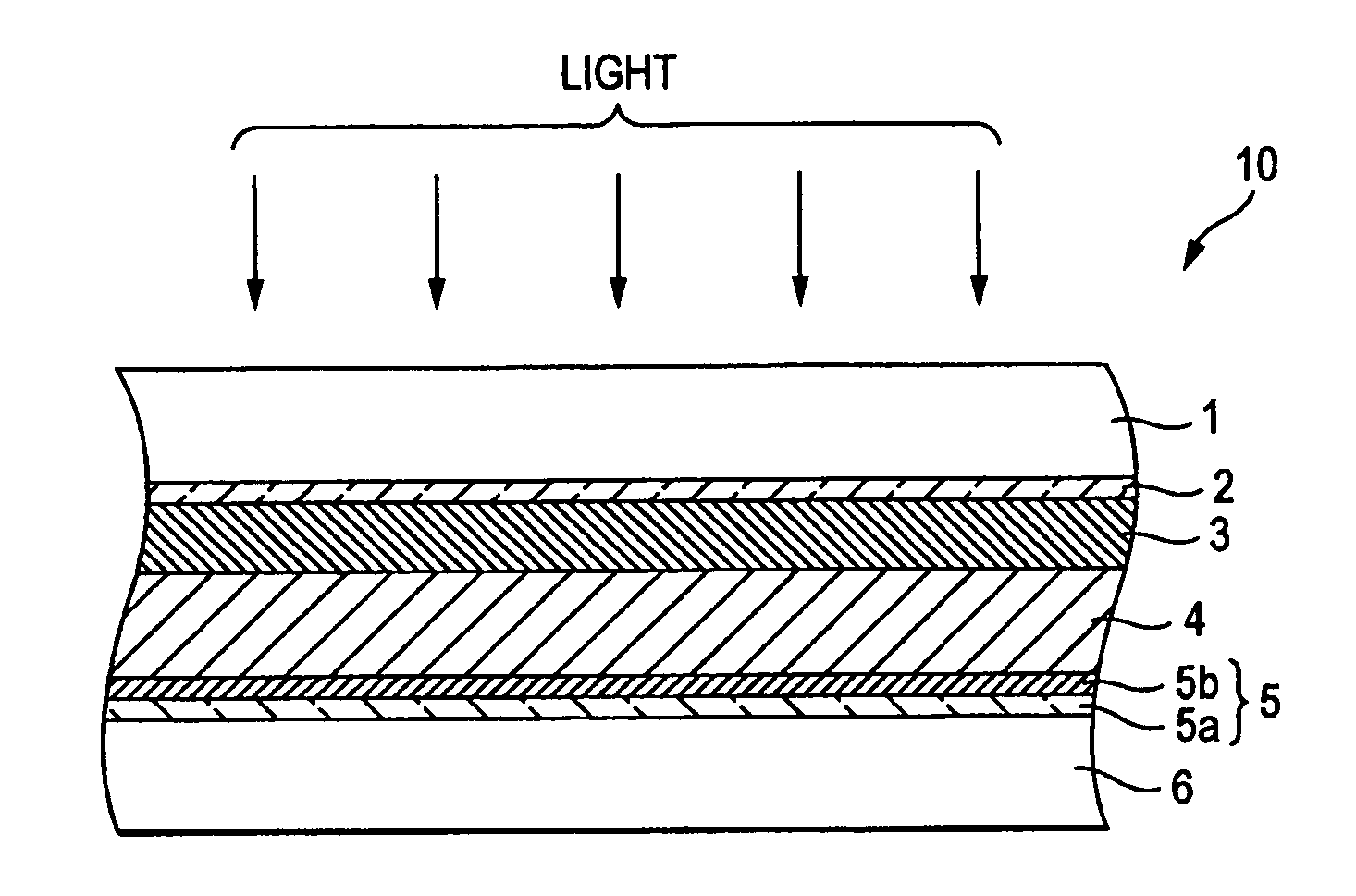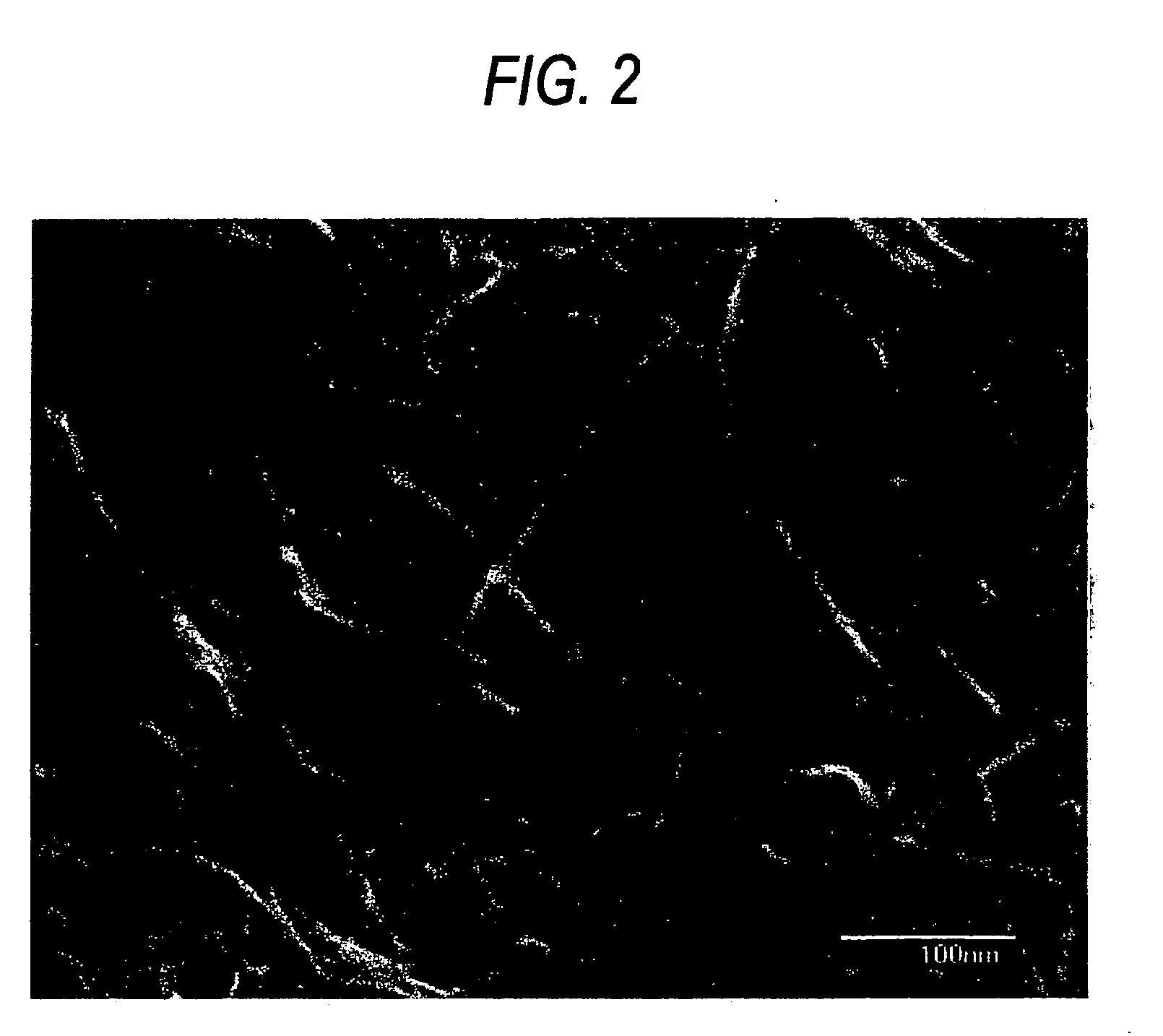Photoelectric conversion apparatus and gelling agent
a technology gelling agent, which is applied in the field of photoelectric conversion apparatus, can solve the problems of reducing photoelectric conversion efficiency, increasing the inner resistance increasing the fill factor, so as to achieve the effect of suppressing the increase of the inner impedance of the photoelectric conversion apparatus, reducing the effect of filling factor and large specific surface area
- Summary
- Abstract
- Description
- Claims
- Application Information
AI Technical Summary
Benefits of technology
Problems solved by technology
Method used
Image
Examples
example 1
[0080]Ti-Nanoxide T (available from Solaronix SA) which is titanium oxide TiO2 in a paste state was used as a raw material for forming a semiconductor layer 3. This TiO2 paste was applied on an FTO layer which is a transparent electrode (transparent conductive layer) 2 on a transparent substrate 1 by using a blade coating method, to thereby produce a fine-particle layer in square having sizes of 5 mm×5 mm and a thickness of 200 μm. Then, after the layer was held for 30 minutes at 500° C., TiO2 fine particles were sintered on the FTO layer 2, to thereby prepare a TiO2 film. The thus-prepared TiO2 film by such sintering was held in a 0.05M aqueous solution of titanium chloride (IV) TiCl4 for 30 minutes under a temperature of 70° C., rinsed and, then, sintered again for 30 minutes at 500° C.
[0081]Thereafter, a treatment for enhancing the TiO2 sintered body was performed such that ultraviolet light was irradiated on the semiconductor layer 3 (TiO2 sintered body) for 30 minutes by using ...
PUM
 Login to View More
Login to View More Abstract
Description
Claims
Application Information
 Login to View More
Login to View More - R&D
- Intellectual Property
- Life Sciences
- Materials
- Tech Scout
- Unparalleled Data Quality
- Higher Quality Content
- 60% Fewer Hallucinations
Browse by: Latest US Patents, China's latest patents, Technical Efficacy Thesaurus, Application Domain, Technology Topic, Popular Technical Reports.
© 2025 PatSnap. All rights reserved.Legal|Privacy policy|Modern Slavery Act Transparency Statement|Sitemap|About US| Contact US: help@patsnap.com



